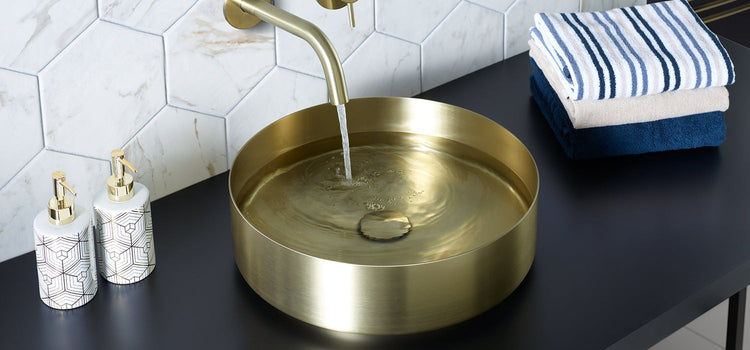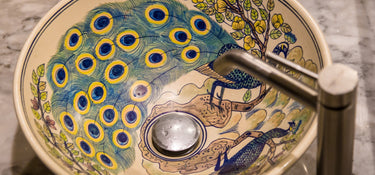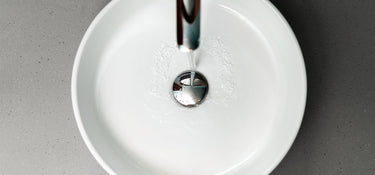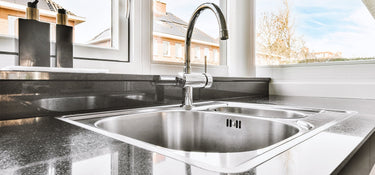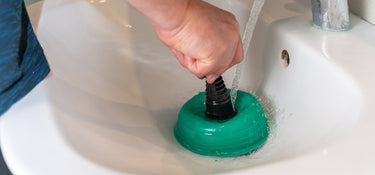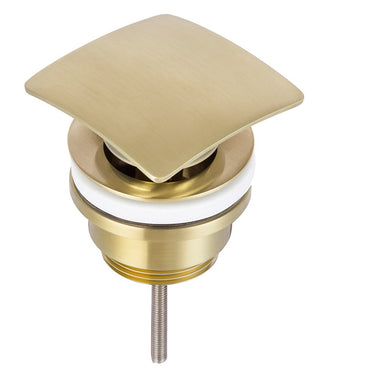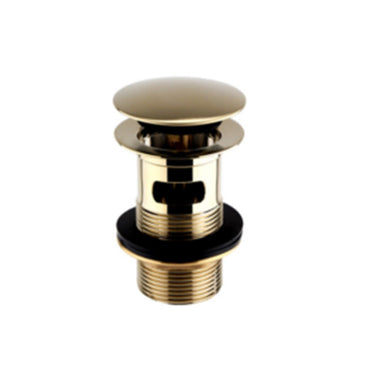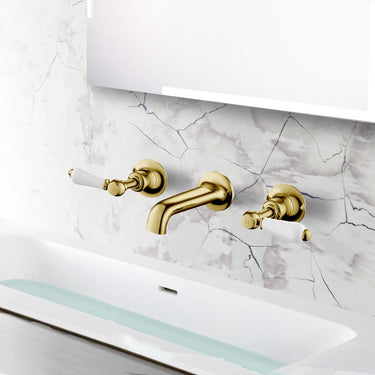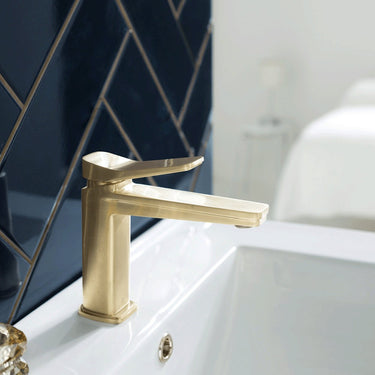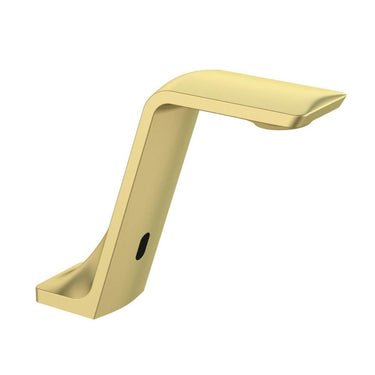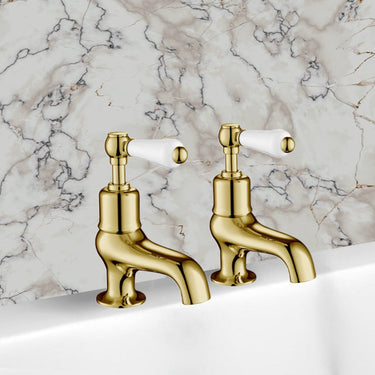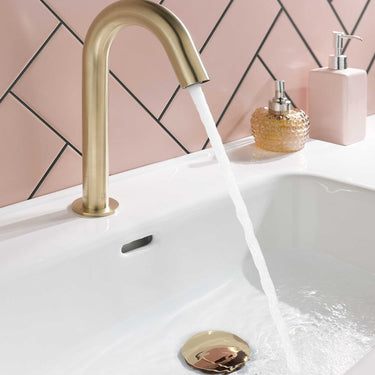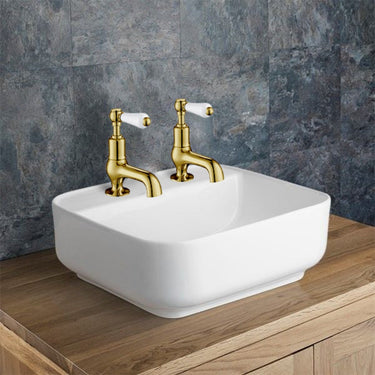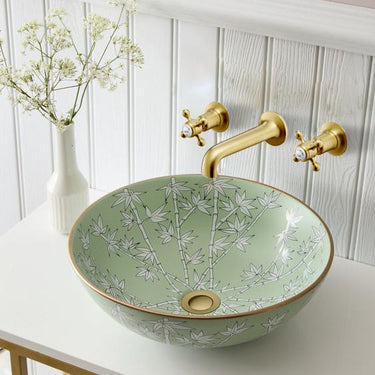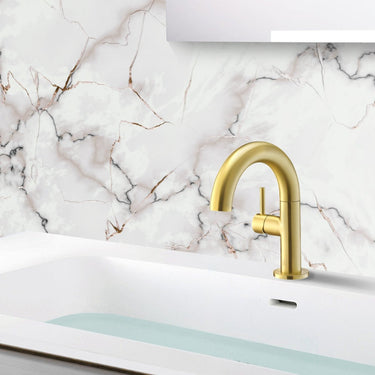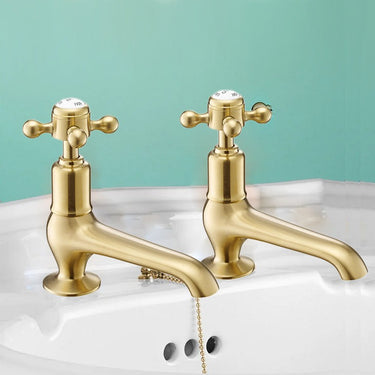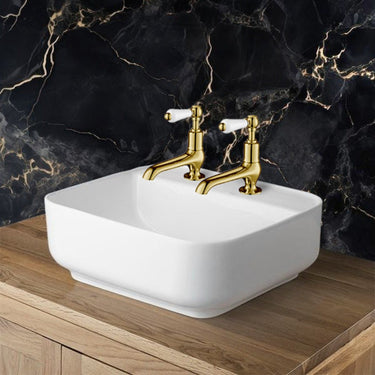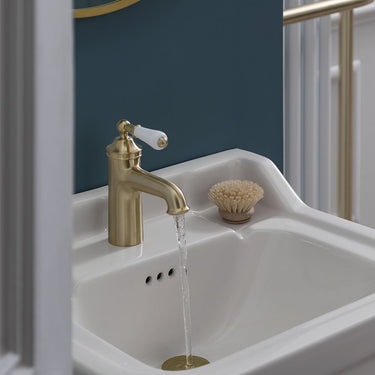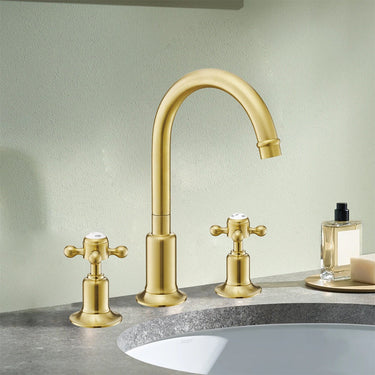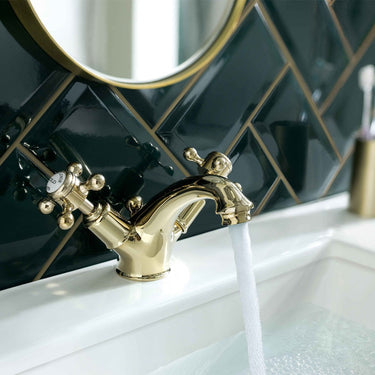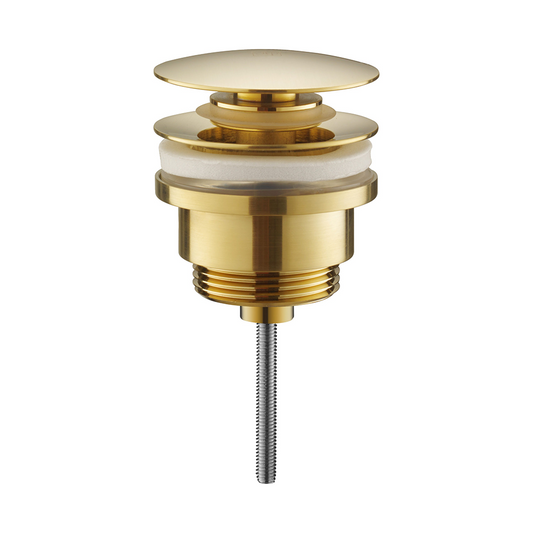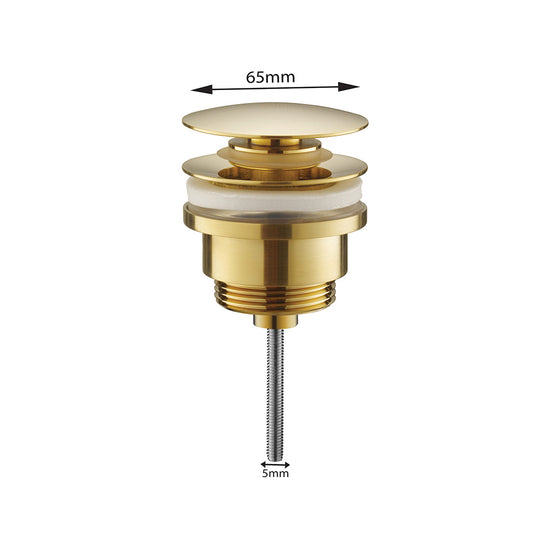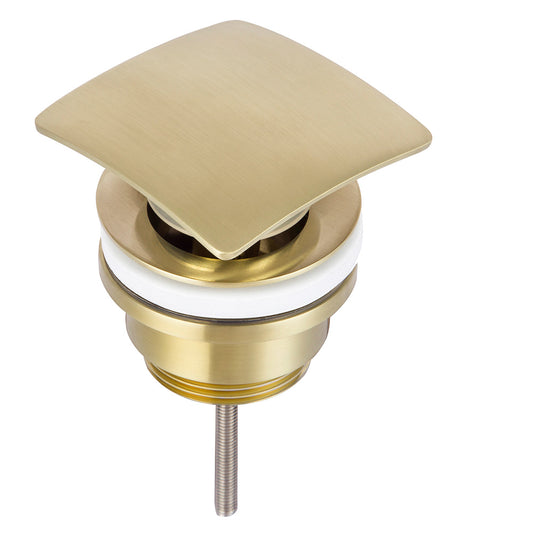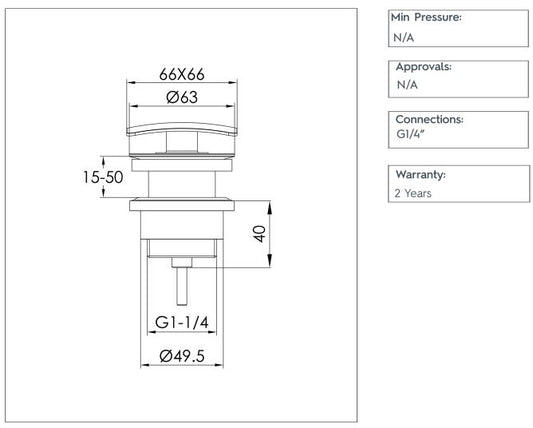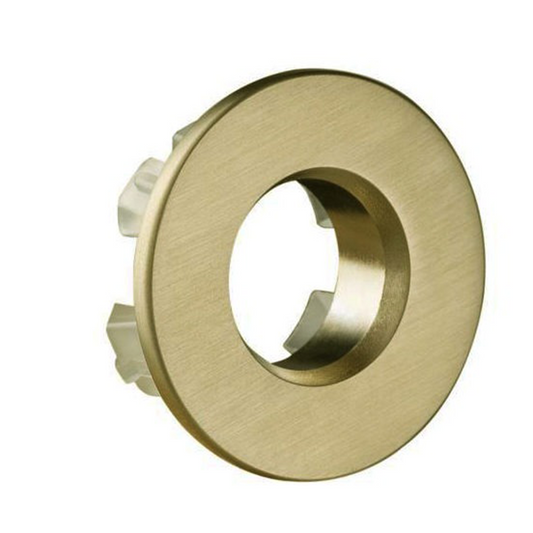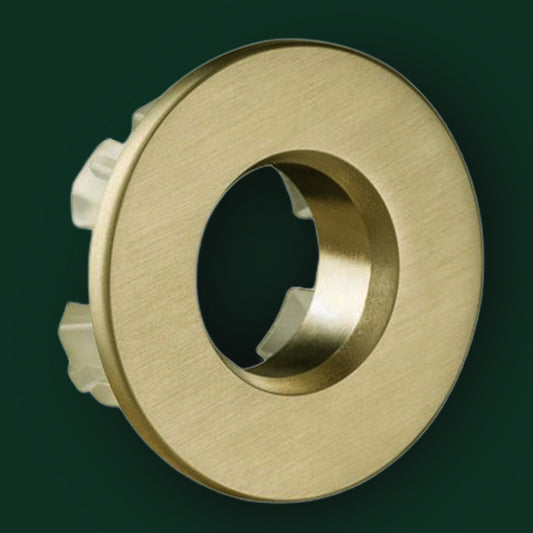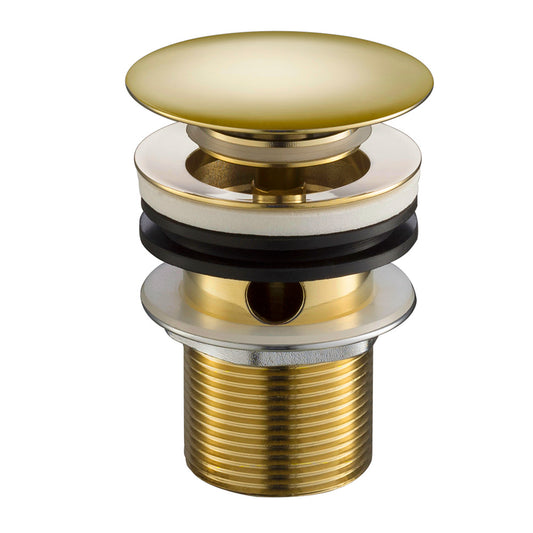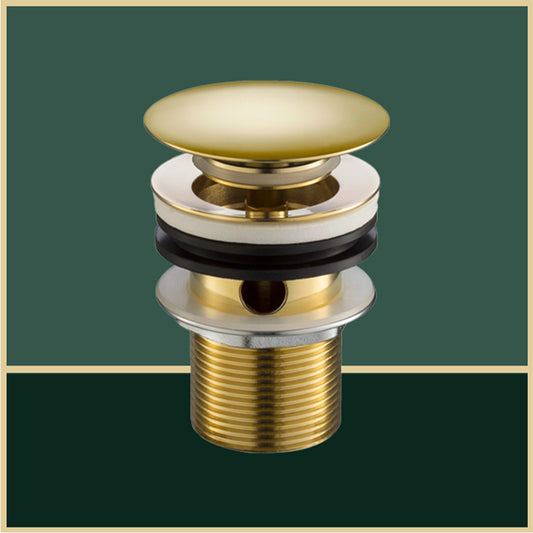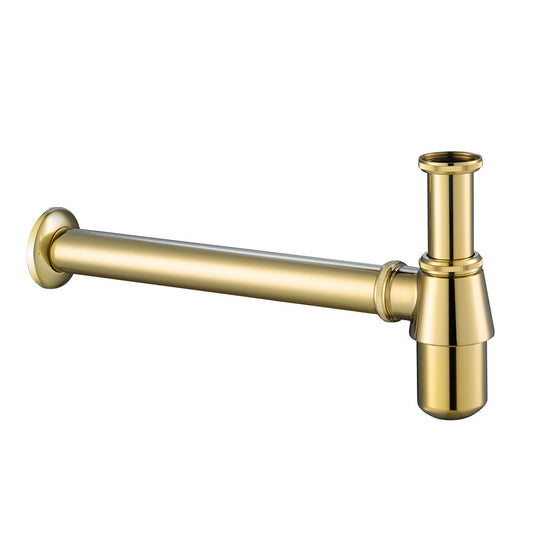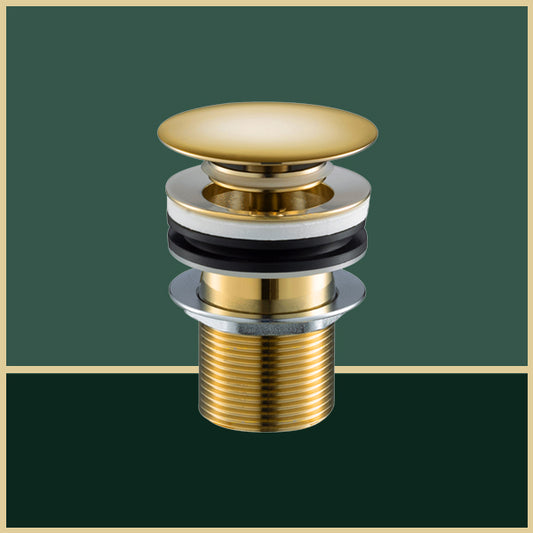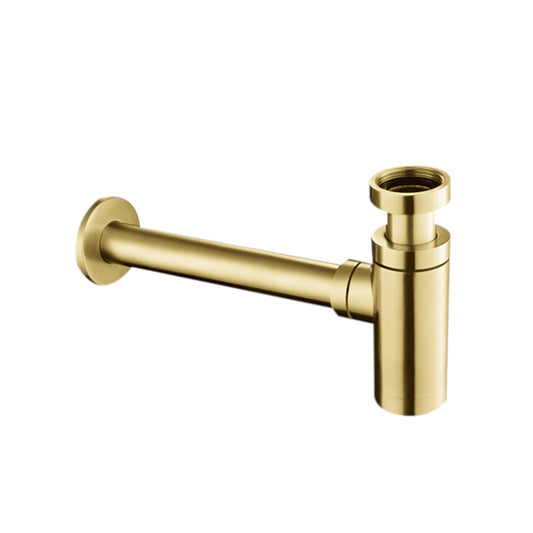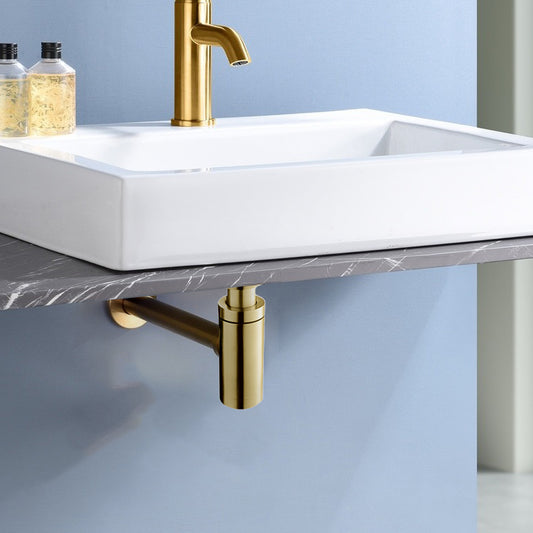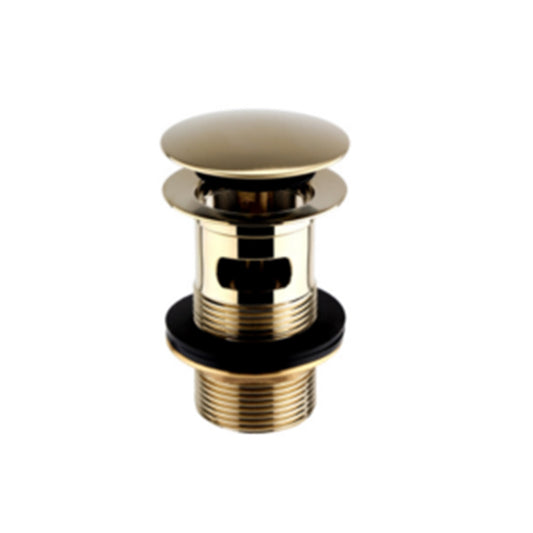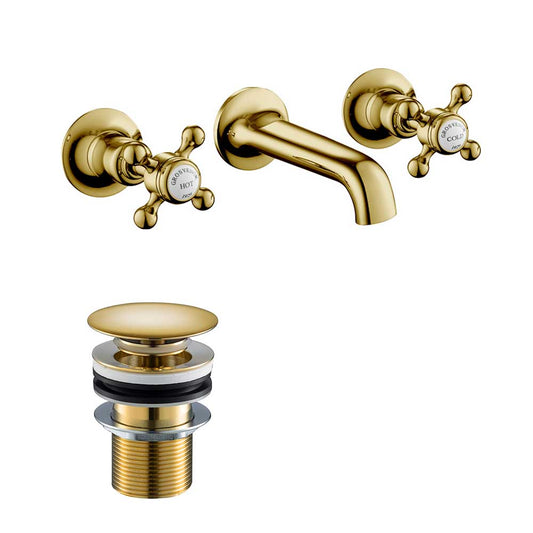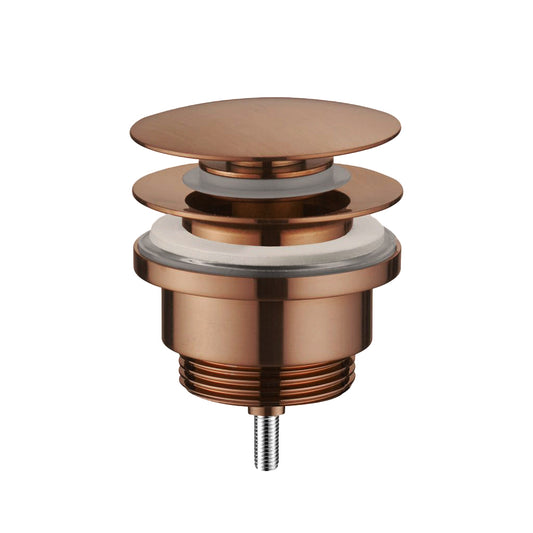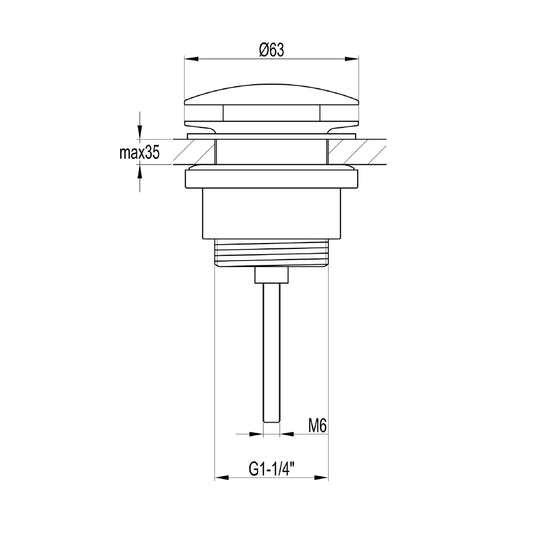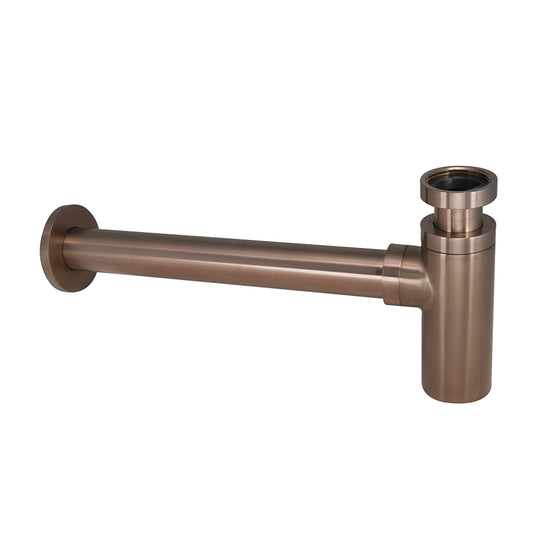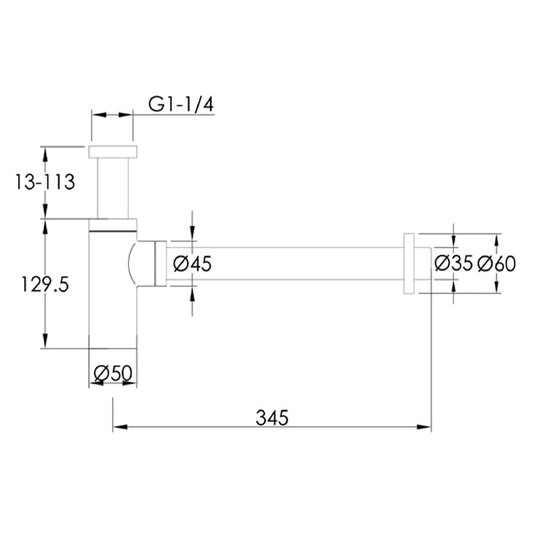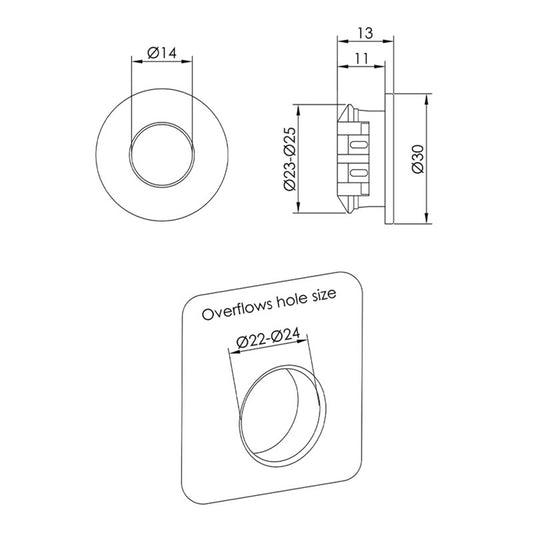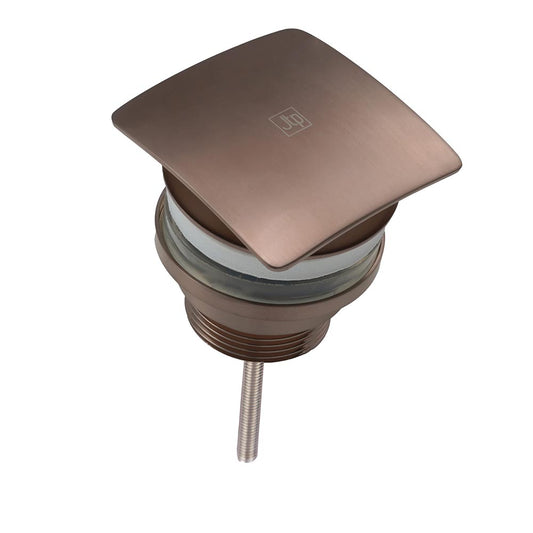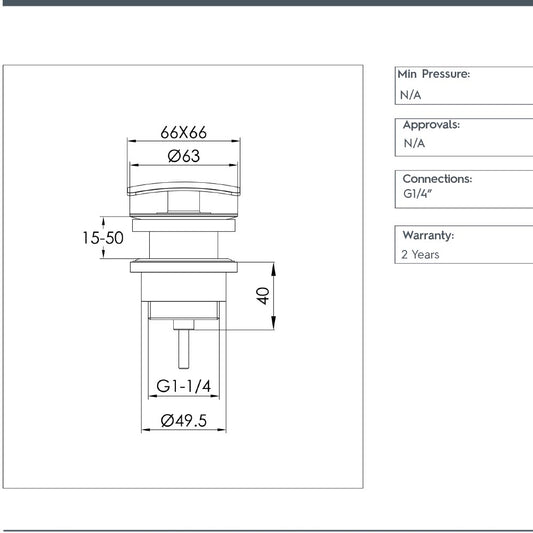An Easy Guide to Basin Wastes
Table Of Contents:
-
Introduction
→ -
Basin Wastes Collection
→ -
What is a Basin Waste?
→ -
Components of a Basin Waste
→ -
How Does a Basin Waste Work?
→ -
Types of Basin Wastes
→ -
The Importance of a Basin Waste in Your Sink's Functionality
→ -
How to Choose the Right Basin Waste
→ -
Step-by-Step Guide to Installing a Basin Waste
→ -
Basin Waste Maintenance: Tips for Longevity and Functionality
→ -
Pricing Guide for Basin Wastes in the UK
→ -
Round vs Square Basin Wastes: Which Shape is Right for Your Sink?
-
Matching Basin Waste to Basin Design: Choosing the Right Fit
→ -
Basin Waste with Overflow: Essential Information
→ -
Conclusion
→ -
Frequently Asked Questions
→
Introduction
When it comes to bathroom sinks and basins, one of the most important yet often overlooked components is the basin waste. While it may seem like a small and insignificant part of the plumbing system, the basin waste plays a vital role in ensuring that your sink functions properly and drains water efficiently. Whether you're installing a new sink or replacing an old waste, understanding the different types, materials, and installation processes is key.
In this guide, we’ll walk you through everything you need to know about basin wastes, from types and materials to how to choose the right one for your sink.

What is a Basin Waste?
A basin waste is a crucial component in the functioning of a bathroom sink. It is the drainage mechanism that controls the flow of water from the basin to the plumbing system, allowing the water to exit the sink after washing hands, cleaning, or using the sink for other purposes. Essentially, it serves as a collection point for the water before it travels through your home’s waste pipes and exits the property.
The basin waste typically comprises several key parts, each of which plays a specific role in ensuring the sink functions properly. Below, we’ll break down the primary components and functions of a basin waste to give you a clearer understanding of how it works:
Components of a Basin Waste
1. Waste Plug
The plug is the part that seals the sink, preventing water from flowing out when it's in place. It can come in various designs and is usually made from materials like brass, chrome, stainless steel, or plastic. The plug can be operated in different ways depending on the type of waste system you have:
-
Push-button waste: The plug can be activated by pressing a button.
-
Click-clack waste: Similar to the push-button but with a click mechanism.
-
Traditional plug & chain: The plug is lifted or lowered manually using a chain.
In certain setups, the plug can also be attached to an overflow system (more on that below), and may require a little extra care to keep it clean and in good working order.
2. Overflow Mechanism
Many modern basins are equipped with an overflow to prevent water from spilling over the edge of the sink if the plug is accidentally left in place or if the water level rises too high. The overflow is a small hole located near the top edge of the basin, which channels excess water into the drainage system before it can spill out. It is a safety feature, particularly useful in situations where the basin is used frequently, like in family bathrooms.
The overflow connects to the waste system through a pipe that diverts excess water into the drain, ensuring the basin doesn’t flood.
3. Waste Fitting
The waste fitting is the part that connects the waste plug to the drain pipe below the basin. This is essentially the connector that allows water to flow from the sink and into the plumbing system. It typically involves a gasket or seal to prevent leaks, and the fitting may vary depending on whether the waste is part of a pop-up, click-clack, or traditional plug and chain system.
It is also important that the waste fitting is properly sealed to prevent water from leaking through the connection between the plug and the waste pipe.
4. Waste Pipe
The waste pipe is the pipe that channels the water from the waste fitting to the household plumbing system. In many cases, this pipe will be connected to the home's soil stack or drainage system, ensuring that wastewater is carried safely away from the bathroom. The size of the waste pipe is typically 32mm or 40mm, and it is essential to ensure there are no blockages in the waste pipe to keep the system running smoothly.
5. Drain
The drain is the opening at the bottom of the basin that the waste fitting connects to. Water flows through the drain and into the waste fitting. This part of the waste system is responsible for directing water out of the basin, and depending on the design, it may feature a rubber seal or gasket to ensure a tight, watertight connection.
How Does a Basin Waste Work?
A basin waste is a fundamental part of your bathroom sink's drainage system. It controls the flow of water from the sink to the plumbing system below, ensuring that water is safely directed away from the basin. Understanding how the basin waste works can help you maintain it properly and ensure the sink functions efficiently. Here's a step-by-step breakdown of how a basin waste operates:
Step 1: Water Flow Into the Basin
When you use the sink for washing hands, cleaning, or other tasks, water is introduced into the basin. The basin's drain at the bottom allows the water to flow out when the waste system is open, but initially, the water will collect in the sink if the plug is in place.
Step 2: Plugging the Basin
Depending on the type of waste system you have, the plug in your basin can either be manually inserted (as in a traditional plug and chain system), or activated by a button, lever, or other mechanism (in systems like push-button, click-clack, or pop-up wastes).
When the plug is in place, it blocks the waste hole, effectively holding the water in the basin. This is particularly useful when you want to soak items or keep water in the sink for a while.
-
Traditional Plug & Chain: You lift the plug and place it in the waste hole, with a chain that connects to it.
-
Push-button or Click-clack Waste: Pressing a button on top of the waste will seal the basin, blocking the water from draining out.
Step 3: Water Drains Once the Plug Is Removed
When you're ready to let the water out of the basin, you either manually remove the plug (in the case of a traditional system) or press the button/lever to release the plug (in the case of a modern system). Once the plug is removed or released, water can freely flow from the basin into the waste fitting.
The waste fitting is the part that connects the plug or waste mechanism to the drainpipe. It ensures a secure and watertight connection, allowing water to pass from the sink into the plumbing system.
Step 4: Overflow Mechanism (if Present)
If your sink has an overflow, this feature serves as a backup to prevent the basin from overflowing with water. The overflow is a small hole usually located near the top edge of the sink, and it’s designed to direct excess water into the drainage system before it can spill over the edge of the basin.
-
How It Works: If the water level in the sink rises too high, the overflow directs any excess water down a separate pipe, which leads to the drainage system.
-
Safety Feature: The overflow ensures that even if you forget to remove the plug, or if you accidentally leave the water running, the basin won’t overflow, preventing water damage to your bathroom.
Step 5: Waste Pipe and Drainage System
Once the water passes through the waste fitting, it travels through the waste pipe. The pipe channels the water from the basin to the household plumbing system, where it eventually exits the home through the main drainage or sewer system.
The drainpipe is typically 32mm or 40mm in diameter and connects the waste fitting to the household plumbing. It is designed to handle the regular flow of wastewater from the sink, and it should always be clear of obstructions to ensure proper drainage.
Step 6: The Drainage Process Is Complete
After the water has successfully flowed from the basin, down the waste pipe, and into the plumbing system, the drainage process is complete. The basin is now ready to be used again, and if the sink was left with water in it, you can repeat the process by sealing the waste with the plug again.
Types of Basin Waste Systems
-
Push-Button Waste: Water drains when you press the button, which opens and closes the drain.
-
Click-Clack Waste: A similar mechanism where the waste opens or closes with a simple click when you push it.
-
Traditional Plug & Chain: This system uses a manual plug and a chain to seal the drain.
-
Pop-Up Waste: A pop-up waste allows you to open or close the plug by pulling a lever or rotating a knob.
-
Free Flow Waste: A waste that doesn’t use a plug and allows water to drain freely at all times.
Why Does It Matter?
The basin waste is a small but essential part of your bathroom plumbing system. It ensures that water is drained from the sink efficiently and safely, preventing water from backing up or overflowing.
-
Overflow Safety: The overflow feature is especially useful for ensuring you don’t flood your bathroom, making it a crucial aspect of basin waste systems.
-
Water Efficiency: A properly working basin waste helps keep water flowing smoothly through the pipes without clogging or leaks, contributing to the overall efficiency of your bathroom plumbing.
In essence, basin waste is a vital part of your bathroom sink's drainage system. It prevents water from pooling in the basin, allowing it to flow through the waste pipe and into the larger plumbing system. The waste system also includes important features like the overflow mechanism and ensures your sink functions smoothly by preventing flooding. Understanding how your basin waste works will help you appreciate its role in the proper functioning of your bathroom and can aid in maintaining and troubleshooting any issues in the future.
Types of Basin Wastes
When selecting a basin waste for your sink, it's essential to understand the different types available. Each waste type offers its unique features for sealing the drain, opening the waste, and managing water flow. The right choice for your bathroom or kitchen sink will depend on factors such as style, functionality, and personal preferences. Below is an overview of the most common types of basin wastes:
1. Traditional Plug and Chain Waste
The traditional plug and chain waste is the classic design used for many years. This waste consists of a plug (often made of metal, ceramic, or plastic) attached to a chain, which is fixed to the sink so the plug won’t get lost.
-
How It Works: You manually place the plug into the drain to stop the water from draining. To release the water, you lift the plug using the chain.
-
Ideal For: Those who prefer a vintage, mechanical system or want a simpler, tried-and-tested solution.
2. Push-Button (Pop-Up) Waste
The push-button waste (also known as a pop-up waste) is a modern option designed for ease of use and a minimalist look. It operates via a button situated at the top of the drain, controlling the opening and closing of the waste.
-
How It Works: Pressing the button once seals the drain, and pressing it again opens it, allowing water to flow out.
-
Ideal For: Those who want a sleek, user-friendly, and hassle-free design for their sink.
3. Click-Clack Waste
The click-clack waste operates similarly to the push-button waste but with a distinct clicking action. This waste opens and closes with a simple press, making it convenient to use.
-
How It Works: Press down once to close the drain, then press again to open it. The mechanism clicks into place each time, signaling the change.
-
Ideal For: Those seeking a stylish, easy-to-operate system without the need for a traditional plug.
4. Free Flow Waste
The free flow waste is a basic waste type that allows water to drain at all times. It does not have a plug, meaning water drains continuously unless something is placed over the drain to temporarily block it.
-
How It Works: Water flows freely from the sink with no option to block it, making this type of waste ideal for specific use cases.
-
Ideal For: Utility sinks or commercial spaces where continuous drainage is required, and blocking water is not necessary.
5. Slotted Basin Waste
The slotted basin waste features a built-in slot in the waste fitting that permits water to drain, even when the plug is closed. This is ideal for basins that include an overflow.
-
How It Works: The slot allows excess water to escape through the waste fitting, preventing the sink from overflowing if the plug is left in and the water is still running.
-
Ideal For: Basins with an overflow system, commonly used in bathrooms to avoid flooding.
6. Un-Slotted Basin Waste
An un-slotted basin waste lacks a slot and is specifically designed for basins that do not include an overflow. This type is ideal for modern sinks where the overflow feature is not present.
-
How It Works: It works as a standard waste but without the additional slot to allow water to escape. It is suited for sinks that do not have an overflow hole.
-
Ideal For: Contemporary or minimalist bathroom designs where overflow protection is unnecessary.
7. Bath and Sink Waste (Combination)
A bath and sink waste combination is a convenient solution for managing the drainage of both the bathtub and the sink through a single waste fitting.
-
How It Works: This type of waste allows both the sink and bath to drain via a shared outlet, making it a space-saving option for small bathrooms.
-
Ideal For: Homes with limited space or those seeking to integrate both bath and sink drainage into one system.
Understanding the different types of basin wastes is crucial when choosing the right one for your bathroom or kitchen sink. Whether you opt for the classic plug and chain, the modern push-button, or the sleek click-clack, each waste system offers its own advantages. Consider the functionality, design, and requirements of your space to find the best option for your needs.

The Importance of a Basin Waste in Your Sink's Functionality
A basin waste may seem like a small and simple component of your bathroom sink, but it plays a crucial role in the overall functionality of your sink and plumbing system. It’s the part of the sink that ensures water is drained efficiently, safely, and cleanly from the basin. Whether you're washing your hands, brushing your teeth, or cleaning up, the basin waste ensures that wastewater flows away from the sink and doesn’t cause any issues. Here are several reasons why the basin waste is so important:
1. Effective Water Drainage
The primary function of a basin waste is to manage the flow of water from your sink into the drainage system. Without a proper waste system, water would accumulate in the basin, causing potential flooding or stagnant water. The waste fitting, along with the plug, drain, and waste pipe, ensures that the water you use in the sink is safely directed out of the basin and into the plumbing system.
2. Prevents Blockages and Overflow
A basin waste helps to prevent blockages in the sink by directing the water and any debris (like soap scum, hair, or dirt) into the drainage system. The overflow feature, which is commonly found in modern basins, ensures that if too much water fills the sink (for example, if the plug is left in place or the tap is running), excess water is diverted into the drainage system before it can spill over the edge of the sink. This helps to protect the bathroom from flooding, water damage, and mold growth.
3. Keeps Your Sink Clean and Dry
By ensuring that water drains away properly, the basin waste helps to keep the sink clean and dry. A waste that works effectively prevents water from pooling around the edges of the sink, which can lead to grime buildup, staining, or unpleasant odors. A well-functioning basin waste helps to maintain a cleaner, more hygienic sink area, especially important in a bathroom or kitchen.
4. Prevents Water Damage
Water damage can be a major concern in bathrooms, especially in areas like the flooring, walls, and cabinets. A malfunctioning or clogged basin waste can result in slow drainage, causing water to pool in the basin. If left untreated, this can lead to overflows that damage floors, cabinetry, and surrounding areas. An effective basin waste ensures that water flows freely, reducing the chances of water spilling onto the bathroom floor and causing costly damage.
5. Ensures Efficient Plumbing
A basin waste is also a critical component for the overall plumbing system in your bathroom. When properly installed and maintained, it ensures that water flows smoothly from the sink to the household plumbing system without interference. If there’s an issue with the waste system, it can lead to blockages or backups in the plumbing, which may cause more serious problems like slow drainage or even a clogged system. The waste helps keep the entire plumbing system working efficiently, reducing the need for frequent repairs.
6. Aesthetic Consistency and Design
The basin waste is available in various designs, materials, and finishes to match the style of your bathroom. Whether you have a modern, minimalist bathroom or a more traditional design, choosing the right basin waste complements the look and enhances the overall aesthetic. Options like chrome, brass, stainless steel, or gold finishes allow you to maintain consistency with your bathroom’s fixtures, creating a cohesive, polished appearance.
7. Convenience and Functionality
Modern basin waste systems are designed to be user-friendly and convenient. For instance, click-clack and push-button mechanisms allow you to open or close the drain with just a simple push or press. This eliminates the need for manually lifting or twisting a plug, making it easy to control the water flow in your sink. The convenience of these systems enhances the overall user experience and reduces the risk of handling dirty or wet plugs.
8. Helps Maintain Hygiene
Proper drainage via the basin waste contributes to a more hygienic bathroom. Stagnant water can quickly turn into a breeding ground for bacteria, mold, and mildew. A functional waste system helps to keep the water flowing, ensuring that the basin and surrounding areas remain dry and free from excess moisture. The regular removal of wastewater prevents unpleasant odors and ensures the cleanliness of your bathroom.
The basin waste may be a small yet highly important component in your sink’s plumbing system. Its main function is to manage the flow of water out of the sink, preventing blockages, overflows, and water damage. Beyond that, a well-functioning basin waste contributes to a cleaner, more hygienic bathroom, prevents plumbing issues, and maintains the aesthetic and functionality of the space. Whether you're dealing with a traditional plug-and-chain waste or a modern push-button or click-clack system, ensuring your basin waste is working properly is essential for a smooth-running bathroom experience.

How to Choose the Right Basin Waste
Choosing the right basin waste can add a touch of luxury and sophistication to your bathroom. Gold accents are becoming increasingly popular in modern and traditional bathroom designs, and a basin waste can complement various styles. However, it’s important to consider a few key factors before making your purchase to ensure both functionality and style are achieved. Here’s how to choose the perfect basin waste for your sink.
1. Consider the Type of Basin Waste
For a basin waste, you can select from various mechanisms, each offering different levels of functionality and convenience:
-
Push-Button (Pop-Up) Waste: This is a modern and sleek option. The gold finish adds elegance to the design, and the push-button operation makes it easy to open or close the waste with a simple press. Ideal for contemporary bathrooms, this type is both user-friendly and stylish.
-
Click-Clack Waste: Similar to the push-button waste, a click-clack waste is operated by pressing down to open or close the drain. Its design is typically minimalist, making it a great option for those who want a clean, streamlined appearance along with the luxurious gold finish.
-
Traditional Plug and Chain: If you’re aiming for a vintage or classic style, a plug and chain waste might be your choice. This type adds old-world charm, and the gold accents will make your bathroom feel more opulent and timeless.
2. Match the Gold Finish with Your Bathroom Style
A basin waste can dramatically elevate the aesthetic of your bathroom. Consider the overall style of your space before making your selection:
-
Contemporary Bathrooms: If your bathroom features modern fixtures and sleek designs, a polished gold finish (or brushed gold) can create a striking contrast with other chrome or matte elements.
-
Traditional or Vintage Bathrooms: For more classic or vintage spaces, choose a gold finish with a more antique or matte appearance to add warmth and sophistication without overpowering other elements. An antique gold or brushed gold finish works particularly well in these designs.
-
Luxury and Opulence: If you are aiming for a high-end or luxury bathroom, opt for a high-gloss gold finish to create a glamorous and rich look.
3. Durability and Maintenance
Gold finishes come in different grades of durability. Ensure the basin waste you choose is coated with a high-quality material to resist tarnishing and fading over time.
-
Plated Gold: Some gold basin wastes have a gold-plated finish, which can be more susceptible to wear and tear over time. While this option is often more affordable, it may require more maintenance to keep its shine.
-
PVD-Coated Gold: PVD (Physical Vapor Deposition) coating is a more durable method for applying gold finishes. It offers long-lasting resistance to tarnishing, scratching, and fading, making it an excellent choice for high-use areas like bathrooms.
-
Solid Brass with Gold Finish: Opt for brass with a gold finish for a combination of durability and luxury. Brass is highly resistant to corrosion, and with a gold coating, it maintains both strength and a refined look for years.
4. Size and Compatibility
Ensure that the basin waste you select is compatible with the size of your basin. Most standard sinks typically use 1 ¼ inch or 1 ½ inch wastes, but it’s always best to check the drain hole size of your basin to ensure a perfect fit.
Additionally, consider whether your sink has an overflow. If it does, make sure to select a slotted basin waste with a gold finish to allow for proper water drainage and overflow protection. If your sink doesn’t have an overflow, choose a non-slotted basin waste.
5. Choose Between Slotted and Un-Slotted
Depending on whether your sink has an overflow or not, you’ll need to choose the correct type of basin waste:
-
Slotted Basin Waste: If your sink has an overflow hole, a slotted waste is required to allow water to escape in case of an overflow. The slotted opening works with the overflow hole to prevent spillage when the plug is in place.
-
Un-Slotted Basin Waste: If your basin doesn’t have an overflow hole, a non-slotted waste is the right choice. This type is simpler and typically used in newer sink designs that do not require an overflow system.
6. Consider the Cost
Basin wastes tend to be more expensive than other finishes due to the luxurious aesthetic and the material used. Prices can vary based on the type of gold finish, the material of the waste, and whether it has additional features like PVD coating for added durability.
Set a budget before you start shopping and be prepared for a slightly higher investment for high-quality gold finishes. However, the stylish and long-lasting appeal they offer can make the investment worthwhile for enhancing your bathroom's overall design.
7. Ensure Easy Installation
Most basin wastes are designed for straightforward installation, and many come with a standard fitting size. Make sure that the waste you choose is easy to install or comes with clear instructions if you plan to do it yourself. If you're unsure, it may be helpful to hire a professional plumber for installation to ensure everything is properly fitted and sealed.
When selecting a basin waste, take into account the type, material, durability, and compatibility with your sink. A gold finish adds a touch of elegance and sophistication to your bathroom, but it’s essential to choose a high-quality product that will last. Whether you go for a push-button, click-clack, or traditional plug and chain design, the right basin waste will seamlessly integrate with your bathroom’s decor, providing both functionality and style.
Step-by-Step Guide to Installing a Basin Waste
Installing a basin waste correctly is essential for ensuring proper drainage and preventing leaks. Whether you're replacing an old one or installing a new one as part of a bathroom upgrade, a basin waste allows water to flow efficiently from your sink into the plumbing system. Here's a simple guide on how to install a basin waste properly.
Tools and Materials You’ll Need:
-
Basin waste fitting (ensure it's the correct type and size for your sink)
-
Silicone sealant or plumber’s tape
-
Adjustable wrench
-
Basin wrench (for tight spaces)
-
Bucket or towel (to catch any water)
-
Screwdriver (if required)
-
Waste pipe or P-trap (for connecting the waste to the drain)
1. Remove the Old Basin Waste (If Replacing)
If you’re replacing an existing waste:
-
Turn off the water supply: Before starting any plumbing work, turn off the water to avoid any mess.
-
Prepare the area: Place a bucket or towel under the sink to catch any remaining water.
-
Disconnect the old waste: Use a wrench to loosen and remove the nuts securing the waste fitting to the sink. Once loose, you should be able to remove the old waste fitting.
2. Check the Drain Hole Size
Before you install the new basin waste, check the size of the hole in your sink to ensure it fits the waste fitting. Most standard sinks require a 1 ¼ inch or 1 ½ inch fitting, but it’s always a good idea to double-check.
3. Prepare the New Basin Waste
Once you’ve confirmed that the fitting is the right size, it’s time to prepare the new basin waste for installation:
-
Apply Sealant or Plumber’s Tape: Apply a thin layer of silicone sealant or plumber's tape to the threads of the basin waste. This will create a watertight seal and prevent leaks once installed.
-
Assemble the Waste: If your new waste comes with several parts (such as a push-button or click-clack mechanism), assemble them according to the manufacturer's instructions.
4. Insert the Waste Fitting Into the Sink
Now, it’s time to insert the basin waste into the sink’s drain hole:
-
Position the Waste: Carefully insert the waste fitting into the sink’s drain hole. If your sink has an overflow, make sure the waste fitting has a slotted design to allow water to flow out through the overflow hole.
-
Attach the Locking Nut: From underneath the sink, place the locking nut onto the threaded part of the waste fitting. Use your hands to tighten it into place.
5. Secure the Waste Fitting
To ensure a tight, secure connection:
-
Use a wrench to tighten the locking nut further, but be careful not to over-tighten as this could crack or damage the sink.
-
Double-check that the waste fitting is secure and aligned properly.
6. Connect the Waste Pipe or P-Trap
Next, you need to connect the waste fitting to the drainage system:
-
Align the Waste Pipe: Connect the waste fitting to the waste pipe or P-trap underneath the sink. This pipe will carry the wastewater from the sink to your home’s plumbing system.
-
Tighten the Connections: Use a wrench to tighten the connection between the waste fitting and the waste pipe, ensuring a secure and leak-free connection.
7. Test for Leaks
Once everything is connected:
-
Turn on the Water: Slowly turn on the water supply to the sink.
-
Check for Leaks: Let the water run and check all connections for leaks, especially around the waste fitting and underneath the sink.
-
Tighten if Necessary: If you notice any leaks, tighten the connections slightly, ensuring the waste is sealed properly.
8. Clean Up
Once you're sure there are no leaks:
-
Clean the Area: Wipe down the sink and surrounding area to remove any excess silicone or debris.
-
Check Functionality: Ensure the waste opens and closes correctly (if it's a push-button or click-clack type) and that water drains smoothly.
Proper installation of your basin waste is crucial to the functionality and appearance of your sink. By following these easy steps, you’ll ensure that your sink drains correctly and operates efficiently. Whether you’re working with a gold finish basin waste or a more traditional design, careful installation will help you avoid leaks and enjoy a properly functioning sink for years to come.

Basin Waste Maintenance: Tips for Longevity and Functionality
Proper maintenance of your basin waste ensures it continues to function smoothly, prevents clogs, and extends its lifespan. Regular care helps keep your sink in top condition, whether it's a gold finish basin waste or a standard one. Here’s how to maintain your basin waste to avoid common issues and preserve its performance.
1. Regular Cleaning to Prevent Clogs
-
Clear Debris: Over time, hair, soap scum, and other debris can accumulate in your basin waste. Regularly clean it to prevent blockages. Use a soft brush or a pipe cleaner to clear any debris from the drain.
-
Baking Soda and Vinegar: A natural and effective cleaning method is to pour baking soda and vinegar down the drain. Let it sit for about 15 minutes before flushing with hot water. This helps break down build-up without damaging your waste fitting.
-
Avoid Harsh Chemicals: While chemical drain cleaners are effective at clearing clogs, they can damage the waste fitting, especially those with gold finishes. Stick to milder cleaning methods to preserve the integrity of the materials.
2. Check for Leaks and Tighten Connections
-
Inspect Regularly: Periodically check for leaks around the basin waste. Look for any water pooling around the drain area or under the sink, which could indicate a loose connection.
-
Tighten Connections: If you notice any leaks, use an adjustable wrench to gently tighten the locking nuts and waste pipe connections. Be careful not to overtighten, as this can damage the fittings.
3. Prevent Soap Scum and Mineral Buildup
-
Wipe the Waste After Each Use: After every use, wipe down the basin waste, especially if it has a gold finish. This will help prevent soap scum, water spots, and mineral deposits from building up and tarnishing the finish.
-
Descale When Necessary: If you live in an area with hard water, mineral buildup can accumulate around the drain. Use a descaling solution periodically to remove calcium and limescale deposits.
4. Check the Overflow Mechanism (If Applicable)
If your sink has an overflow:
-
Clear the Overflow: Ensure the overflow hole remains clear of debris and buildup. The overflow helps prevent water from spilling over the edges of the sink, and a blocked overflow can lead to water damage or inefficient drainage.
-
Clean the Slot: Use a small brush or a cotton swab to clean the slot around the overflow and ensure water flows freely.
5. Replace Worn-Out Parts Promptly
-
Inspect the Mechanism: If you have a push-button or click-clack basin waste, the internal mechanism may wear out over time. Check for smooth operation and replace any broken parts, such as the spring or button, to keep the waste working properly.
-
Seal and Washer Replacement: Seals and washers can degrade with time, leading to leaks. Replace worn-out washers or seals to prevent any issues and ensure a watertight connection.
6. Protect the Finish (For Gold or Other Decorative Wastes)
-
Avoid Abrasive Cleaners: If you have a gold finish basin waste, be gentle with your cleaning methods. Abrasive cleaners can scratch the surface, causing the gold finish to dull over time. Use a soft cloth and mild cleaner instead.
-
Polish for Shine: To maintain the gold finish’s luster, consider using a special brass or gold polish that’s safe for bathroom fixtures. This can help remove water spots and restore the shine of your gold basin waste.
7. Address Blockages Quickly
-
Clear Clogs Promptly: If your sink begins to drain slowly, clear the blockage as soon as possible. Use a plunger, a drain snake, or a natural cleaner to prevent the buildup from causing further issues.
-
Routine Drain Maintenance: For additional preventative care, you can pour hot water down the drain regularly to keep the pipes free of minor obstructions.
Maintaining your basin waste is key to ensuring your sink stays functional and looking great. Regular cleaning, leak checks, and preventative care will keep your basin waste in top condition and prevent common plumbing issues. Whether you have a gold finish or a traditional design, taking care of your waste fitting will help you enjoy smooth drainage and a tidy, efficient bathroom.
Pricing Guide for Basin Wastes in the UK
The cost of a basin waste in the UK can vary depending on several factors, including the type, material, finish, and brand. Below is a general breakdown of basin waste prices across different categories:
1. Standard Basin Wastes
-
Plastic Basin Waste: A basic plastic basin waste typically costs between £5 to £15. These are common in budget-friendly bathroom installations and are ideal for those looking for an economical option.
-
Brass Basin Waste: A brass basin waste (often more durable than plastic) usually ranges from £10 to £30. Brass is a popular material for its strength and long-lasting quality.
2. Gold Finish Basin Wastes
-
Gold Plated Basin Waste: A gold-plated basin waste (including polished gold or brushed gold) tends to be a higher-end option. Prices for these finishes typically range from £25 to £80, depending on the quality of the plating and whether it's coated with PVD (Physical Vapor Deposition) for added durability.
-
Antique or Matte Gold Finish: For a more vintage or matte gold appearance, the cost can range from £35 to £70, depending on the design and brand.
3. Specialty Basin Wastes
-
Push-Button and Click-Clack Basin Wastes: These are more modern options, often with sleek designs and smooth operation. Prices for push-button or click-clack waste fittings with a gold finish can range from £40 to £100, depending on the brand and materials used.
-
Slotted vs. Un-Slotted: If you're opting for a slotted basin waste (necessary if your sink has an overflow), expect prices to be slightly higher than un-slotted versions. These typically range from £15 to £60, depending on finish and materials.
4. High-End and Designer Basin Wastes
-
Luxury or Designer Brands: For premium or designer basin wastes, especially those with intricate finishes, top-quality materials (like solid brass with gold finish), and advanced features (like anti-bacterial coatings), the prices can reach £100 or more.
Additional Costs
-
Installation Costs: If you hire a plumber to install your basin waste, you should factor in the cost of labor. Installation fees typically range from £50 to £100, depending on the complexity of the installation and your location.
-
Additional Parts: If you need additional components like a P-trap, waste pipe, or sealant, you may need to spend an extra £5 to £15 for each part.
When purchasing, consider factors such as the material, finish, and style of the waste, as well as the associated installation costs to find the best option for your budget and needs.
Round vs Square Basin Wastes: Which Shape is Right for Your Sink?
When choosing a basin waste, the shape plays a crucial role in both the functionality and aesthetic of your bathroom. The two most common shapes are round and square. Below, we break down the characteristics of each to help you choose the right one for your sink.
Round Basin Waste
-
Classic and Versatile: The round basin waste is the most commonly used design, thanks to its classic shape that suits most sinks. It features a circular shape, making it a versatile choice for a wide range of bathroom styles.
-
Compatibility: Round basin wastes typically fit standard round or oval sinks, making them a popular option for traditional and modern bathrooms alike.
-
Aesthetic Appeal: Its clean, circular shape provides a soft, unobtrusive look that blends seamlessly with various sink designs and bathroom styles.
-
Functionality: Round wastes are available in both slotted and un-slotted options, with push-button or click-clack mechanisms for ease of use. They also come in a range of finishes, including chrome, gold, and brass, allowing for flexibility in your bathroom design.
Square Basin Waste
-
Modern and Bold: The square basin waste offers a sharp, geometric look that adds a contemporary edge to your bathroom. This waste shape is perfect for creating a more striking visual contrast in your space.
-
Compatibility: Ideal for sinks with square or rectangular designs, square wastes complement the angular lines of these basins. They also work well with modern or minimalist bathroom styles.
-
Aesthetic Appeal: Square basin wastes stand out more than their round counterparts, providing a bold statement and a clean, angular design. They are great for adding a touch of sophistication to your bathroom’s look.
-
Functionality: Like round basin wastes, square wastes are available in various materials and finishes. They can also feature push-button or click-clack mechanisms, providing ease of use alongside their stylish appearance.
The choice between a round and square basin waste depends on your sink's shape and the style of your bathroom. Round wastes offer a classic, versatile look suitable for most sinks, while square wastes create a more modern, bold aesthetic, perfect for contemporary bathroom designs. Both shapes offer excellent functionality, so your decision should be guided by your bathroom’s overall theme and the design of your sink.

Matching Basin Waste to Basin Design: Choosing the Right Fit
When selecting a basin waste, it's essential to choose one that complements both the type of basin you have and the overall aesthetic of your bathroom. The right waste not only ensures proper functionality but also enhances the design of your sink and space. Below, we guide you through how to match the basin waste to different basin types.
1. Pedestal Basins
-
Ideal Basin Waste: For pedestal basins, the most common and traditional option is a round basin waste. This is because pedestal sinks often have a classic, simple design, and a round waste complements their clean, curvy lines.
-
Matching Design: Opt for a gold finish or brass round basin waste for a timeless look. Un-slotted basin wastes are typically best for pedestal sinks unless the basin has an overflow.
2. Countertop and Vessel Basins
-
Ideal Basin Waste: Countertop or vessel basins are often modern or designer pieces, and they require a waste fitting that reflects their style. Push-button, click-clack, or flat basin wastes work well with these sinks, providing a sleek, minimal appearance.
-
Matching Design: Choose a round or flat waste for a more subtle, streamlined look. If your countertop basin has a bold or angular design, you may also opt for a square basin waste to match the sharp lines of the basin.
-
Finish: For a high-end, contemporary feel, you could select a gold finish to complement the modern design of the basin.
3. Undermount and Integrated Basins
-
Ideal Basin Waste: For undermount and integrated basins, which often have a seamless design, a round or flat basin waste offers a clean, unobtrusive look. These types of basins integrate directly into the countertop or surface, and you’ll want a waste that doesn’t disrupt the sleek design.
-
Matching Design: A flat or low-profile waste is ideal for undermount basins, giving the bathroom a minimalist and modern feel.
-
Finish: Consider a gold finish for a refined look, though a brass finish can also work if you're going for a warm, luxurious touch.
4. Wall-Mounted Basins
-
Ideal Basin Waste: Wall-mounted basins have a floating design, with no visible pedestal or storage below, and they pair best with a round or square basin waste. A push-button or click-clack waste adds to the modern aesthetic.
-
Matching Design: Square wastes can complement the angular lines of a wall-mounted basin, while a round waste would soften the look. Both options keep the focus on the basin and maximize the open space beneath it.
-
Finish: Choose finishes like gold or brass to enhance the elegance of the wall-mounted design.
5. Freestanding Basins
-
Ideal Basin Waste: Freestanding basins often serve as the centerpiece of the bathroom, so the waste should complement their luxurious design. A square or round basin waste works well depending on the basin's style.
-
Matching Design: Square wastes provide a bold and contemporary touch to freestanding basins with modern designs, while round wastes are more versatile for traditional or soft, organic basin shapes.
-
Finish: Gold finishes are particularly suited to freestanding basins, especially in more elegant or high-end bathroom designs.
6. Rectangular and Angular Basins
-
Ideal Basin Waste: For rectangular or angular basins, a square basin waste is ideal, as it mirrors the clean, sharp lines of the basin. A round waste can still work but may look less cohesive with the angular design.
-
Matching Design: A square basin waste will maintain the linear look of the basin, making the design appear more structured. Choose a waste with a more contemporary style, such as a push-button or click-clack model.
-
Finish: Gold or brass finishes work well with these basins, depending on the overall bathroom style.
When matching a basin waste to your basin design, it's important to consider the shape, finish, and overall style of both the basin and the waste fitting. A well-chosen waste not only ensures smooth drainage but also enhances the aesthetic of your bathroom. Whether you’re outfitting a traditional pedestal basin or a modern countertop sink, the right waste will pull your bathroom’s design together, ensuring both functionality and style.

Basin Waste with Overflow: Essential Information
A basin waste with overflow is an essential part of many bathroom sinks, designed to prevent water from spilling over the edges of the basin. This feature combines the waste fitting with an overflow hole to ensure water is safely drained from the sink, especially when it exceeds the maximum water level. Here’s an in-depth look at the role, function, and benefits of a basin waste with overflow.
What Is a Basin Waste with Overflow?
A basin waste with overflow is a drainage system consisting of two key components: the overflow hole and the waste fitting.
-
Overflow Hole: This small hole is usually located near the top of the basin. If the water level rises too high, it allows the excess water to flow into the drainage system before it spills over the edge of the sink.
-
Waste Fitting: The waste fitting connects the overflow hole to the drainpipe, allowing water to flow safely from the sink into the plumbing system.
This combination ensures that even if water is left running or the sink fills too much, the water is safely diverted into the drain, preventing any potential damage to the surrounding area.
How Does a Basin Waste with Overflow Work?
-
Filling the Sink: When water is running in the sink, it fills up the basin.
-
Overflow Activation: As the water level reaches the overflow hole, it redirects any excess water away from the sink’s edge.
-
Water Drainage: The excess water flows into the waste fitting, which channels it directly into the plumbing drain, preventing a spill.
-
Prevention of Water Damage: This system protects bathroom surfaces, cabinetry, and floors from water damage by preventing overflows.
Why Should You Choose a Basin Waste with Overflow?
-
Prevents Spillage: The most obvious benefit of a basin waste with overflow is its ability to stop water from spilling over the sink’s edge. This is especially useful for pedestal basins, countertop basins, and sinks that tend to hold large amounts of water.
-
Reduces Water Damage: Overflowing water can cause damage to the sink area and surrounding fixtures, such as countertops and flooring. The waste with overflow ensures that no water is wasted or spills, protecting your bathroom from water damage and mould growth.
-
Hygienic Solution: Preventing water from spilling reduces mess and keeps your bathroom dry. This is crucial for maintaining a clean and hygienic bathroom environment, especially in high-traffic areas.
-
Required for Slotted Basin Wastes: If your sink has an overflow hole, you will need a slotted basin waste. The slots in the waste fitting align with the overflow to allow excess water to be redirected and drained safely. Without an overflow, a non-slotted basin waste should be used instead.
How to Choose the Right Basin Waste with Overflow
When selecting a basin waste with overflow, there are several key factors to consider:
-
Sink Compatibility: Ensure that your sink has an overflow hole. If not, you'll need an un-slotted waste (a waste fitting without an overflow hole). It’s essential that the waste fitting is compatible with your sink's design.
-
Waste Type: Choose the waste type that best suits your preferences and bathroom design. Common options include:
-
Push-Button Waste: For a sleek, modern look with a simple push to open and close the waste.
-
Click-Clack Waste: Similar to the push-button, but requires a slight click to activate.
-
Traditional Plug Waste: The classic option with a chain and plug mechanism, offering a more vintage feel.
-
Finish: Choose a waste that matches your bathroom’s aesthetic. Popular finishes include gold, brass, chrome, and matte black. A gold finish is especially popular for adding a luxurious touch, while chrome and brass work well in more classic or industrial settings.
-
Material Durability: The material of the basin waste is important for longevity. Look for high-quality, rust-resistant materials like brass or stainless steel to ensure the waste fitting stands up to regular use and doesn’t corrode over time.
A basin waste with overflow is a crucial component for sinks with an overflow hole, as it helps manage excess water by directing it safely into the drain. This mechanism prevents potential spills, protects your bathroom from water damage, and ensures that your space stays hygienic and dry. When choosing a basin waste with overflow, make sure it aligns with the design and functionality of your sink, considering the style of the waste, the finish, and the overall bathroom aesthetic.
Whether you’re installing a new sink or replacing an existing waste, opting for a basin waste with overflow provides peace of mind, knowing that your sink will always drain safely and efficiently.
Conclusion
Choosing the right basin waste is essential for both functionality and aesthetics in your bathroom. Whether you opt for a push-button, click-clack, or traditional plug and chain waste, there is a style to suit any bathroom. Keep in mind factors like material, compatibility, and installation to make sure you get the perfect fit for your basin. Regular maintenance will ensure your waste system works smoothly for years to come, providing you with both convenience and style.
Frequently Asked Questions
A basin waste is a drainage mechanism that allows water to flow from the sink into the plumbing system. It typically consists of a plug, drain, and waste fitting, which connects to the sink’s plumbing and controls the water’s flow.
A basin overflow is designed to prevent water from spilling over the edge of the sink. It diverts excess water into the drain when the water level rises too high, protecting the sink and surrounding areas from water damage.
A slotted basin waste is for sinks with an overflow hole, allowing water to flow from the overflow into the drain. An un-slotted basin waste is used for sinks without an overflow hole and does not feature slots to accommodate the overflow.
To choose the right basin waste, consider whether your sink has an overflow. If it does, you’ll need a slotted waste. If it doesn't, opt for an un-slotted waste. Additionally, consider the style of the waste (e.g., push-button, click-clack, or traditional plug) and the material or finish that matches your bathroom decor.
Yes, installing a basin waste is typically straightforward, especially if you're replacing an existing one. You will need to ensure that the waste fitting is correctly sealed and that the connection to the drainpipe is secure to prevent leaks. If you’re unsure, it’s best to consult a plumber.
Basin wastes are commonly made from durable materials like brass, stainless steel, chrome, brushed nickel, or brass. The material you choose should match your bathroom’s aesthetic while also offering resistance to rust and corrosion.
Regular cleaning of your basin waste ensures it stays functional. Simply use a mild cleaner and a soft cloth to wipe down the waste fitting. Avoid harsh chemicals that may damage the finish. If there’s a buildup of grime, you can use a gentle vinegar solution to remove any residue.
Push-button basin wastes are easy to operate, offering a sleek, modern look with a simple push to open and close the drain. They are often more user-friendly compared to traditional plug-and-chain models and are popular in contemporary bathroom designs.
No, you should not use a non-slotted waste in a sink with an overflow hole. The slotted basin waste aligns with the overflow hole to ensure excess water is safely redirected to the drain. Using a non-slotted waste could cause the sink to overflow.
The cost of a basin waste can vary depending on the material, style, and finish. Prices typically range from £10 to £80 in the UK, with more premium options, such as gold or designer styles, costing more. It’s important to choose a waste that fits your budget and bathroom design needs.
A click-clack basin waste is a type of waste fitting that operates with a simple push-to-open, push-to-close mechanism. It’s a modern, easy-to-use alternative to the traditional plug-and-chain method, ideal for contemporary sinks.



